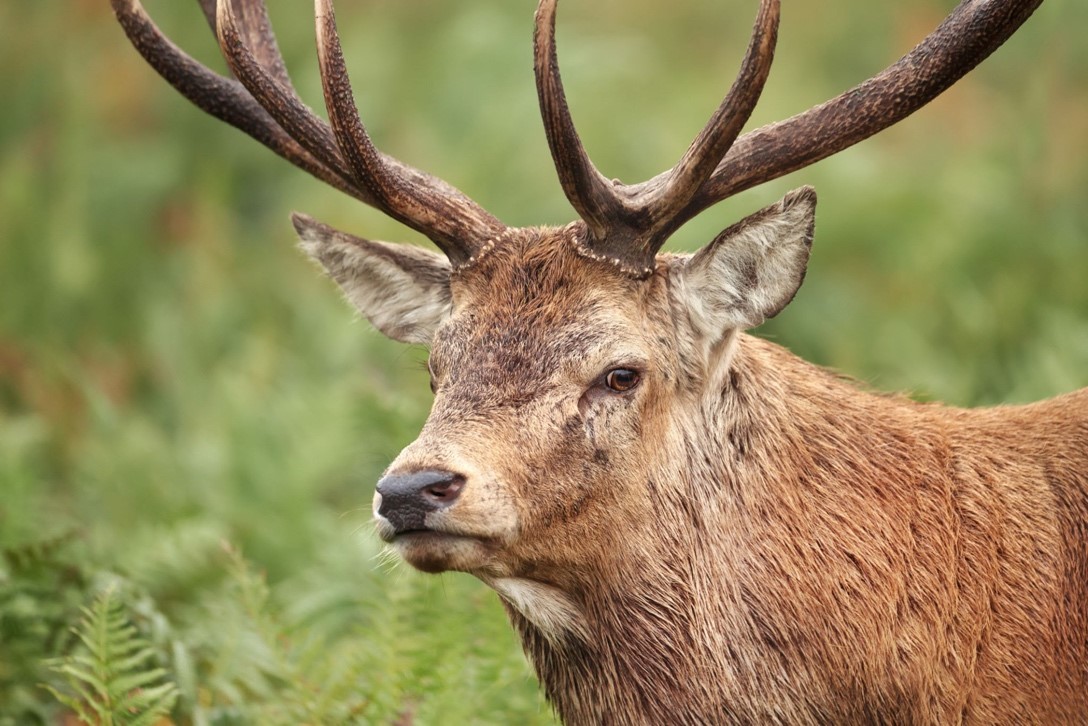Description

Context: In a recent Census conducted at Kashmir’s Dachigam National Park, it was found that the population of Hangul or Kashmiri Stag has gradually increased over time.
Details:
About Hangul:
- Hangul, commonly known as Kashmir Stag is a subspecies of the elk.
- Scientific Name: Cervus hanglu hanglu
- It is a critically endangered animal found in the Indian state of Jammu & Kashmir (state animal).
- The Hangul has a brown reindeer type of look and has a small tail, it has a beige color on the below and inner legs at the rear end of the animal.
- It also has a horn tilted slightly inward with 4-6 tines.
- The Hangul is considered equally significant to the state of Jammu & Kashmir as the tiger is to the whole of India.
- It is the only Asiatic survivor or sub-species of the European red deer.
.jpeg)
Distribution and Living:
- The Kashmir Stag is currently it is being protected in the Dachigam National Park, Rajparian Wildlife Sanctuary, Sind Valley, Forest covered areas of Kishtwar and Bhaderwah, and neighboring areas of Aru.
- This animal lives in herds of 15 - 18 Hanguls in dense forests, hills, and mountains.
- The hangul is restricted to a very small habitat at present.
- The society of Kashmir stag is matriarchal.
- The main predators of the hangul are the snow leopard, the Indian leopard, the Indian wild dog(dhole), and the Himalayan Black Bear.
Decreasing population:
- It had a population of around 5000 in the mid-1900s.
- According to the IUCN, there were only 240(approx.) Hangul left in 2019.
Threats:
- The biggest challenges which have been identified by experts in the way of conservation and population growth of Hangul are habitat fragmentation, predation and very low fawn-female ratio.
- Other causes behind the decrease was the overgrazing by domestic animals, poaching, habitat destruction, pollution, friendly fire.
- A research conducted found an extremely low population of the animals and also loss of breeding areas, higher areas of Dachigam.
- These areas are mostly occupied by wild dogs or Shepards.
Conservation initiatives:
- The International Union for Conservation of Nature’s (IUCN) Red Data Book — which contains lists of species at risk of extinction — has declared the Hangul as one of three species that were critically endangered in Jammu and Kashmir.
- The other two are the Markhor — the world’s largest species of wild goat found in Kashmir and several regions of central Asia — and the Tibetan antelope or ‘Chiru’, found mostly in the mountainous regions of Mongolia and the Himalayas, where Jammu and Kashmir is mostly situated.
- The Hangul is placed under Schedule I of the Indian Wildlife (Protection) Act, 1972 and the J&K Wildlife Protection Act, 1978.

Project Hangul:
- The Project Hangul was started in 1970 by the Kashmir government with the help of WWF.
- Many factors are responsible for the failure of this project.
- No local people were participating in the project.
- It was carried without the involvement of local communities such as Gujjars, Bakarwals, Nambardars, Chowkidars, and Patwaris.
- The project was confined focus around Dagwan, in a radius of 10 km crying foul of Sheep breeding Farm.
- The government departments allowed the establishing of Cement factories around Dachigam National Park.
- There was illegal and reckless unscientific extraction of limestone stretching over miles after miles was carried under its nose. Those areas created death traps for animals.
- The onset of militancy dealt a blow to conservation efforts.
- Later the project was rechristened as “Save Kashmir’s Red Deer Hangul” in 2009.
Conservation breeding centres: Under the Species Recovery Programme, conservation breeding centers are opened at Sikargah, Tral, Pulwama District, and Kangan. But they're not much progress on increasing the numbers.
About the park:
- Dachigam National Park is a national park located in Srinagar on the east side of Dal Lake.
- The name of the park literally stands for "ten villages" which is in the memory of the ten villages that were relocated for its formation.
- These ten villages were living in this region before the World War I in the beginning of 20th century.
- The park has been a protected area since 1910, first under the care of the Maharaja of Jammu and Kashmir and later under the observation of the concerned government authorities.
- It was initially created to ensure a supply of clean drinking water for Srinagar.
- It was upgraded and declared a National Park in 1981.
Topography: Dachigam National park is located in the Zabarwan Range of the western Himalayas.
Flora: The mountain sides below the tree line are wooded. Most of this coniferous forest consists of broad leaf species. Interspersed between these are alpine pastures, meadows, waterfalls and scrub vegetation with deep gullies, locally known as Nars, running down the mountain face.
Fauna: The main animal species that Dachigam is known for is the hangul, or the Kashmir stag.
|
PRACTICE QUESTION
Q) Which of the following statements is/are incorrect with reference to Hangul?
a. The society of Hangul is matriarchal.
b. It is the state animal of Uttarakhand.
I. Only a
II. Only b
III. Both a and b
IV. Neither a nor b
Answer: Option 2
|

https://timesofindia.indiatimes.com/videos/news/recent-census-shows-increased-population-of-endangered-hangul-at-dachigam-national-park/videoshow/98923534.cms?from=mdr












